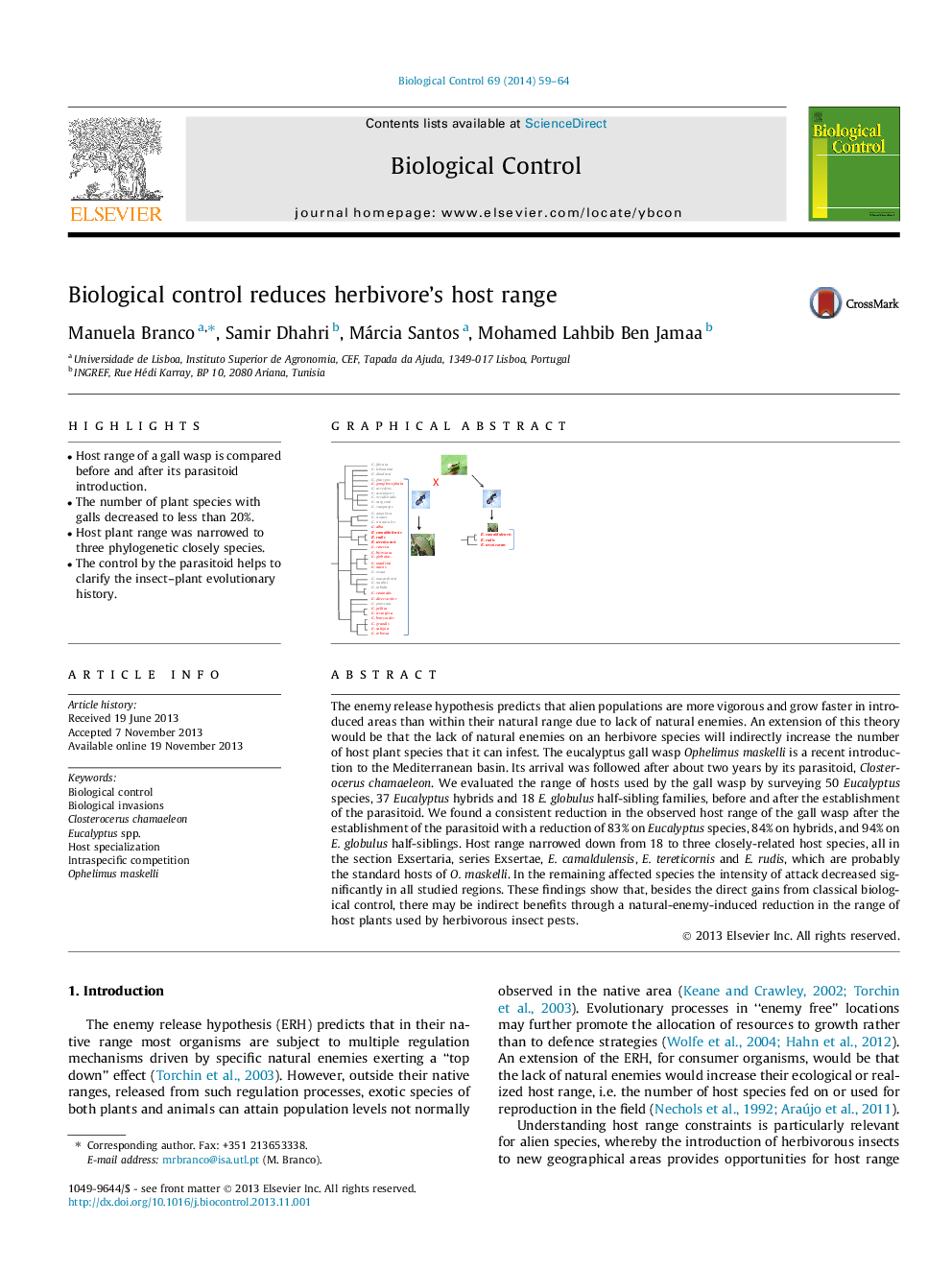| Article ID | Journal | Published Year | Pages | File Type |
|---|---|---|---|---|
| 4503981 | Biological Control | 2014 | 6 Pages |
•Host range of a gall wasp is compared before and after its parasitoid introduction.•The number of plant species with galls decreased to less than 20%.•Host plant range was narrowed to three phylogenetic closely species.•The control by the parasitoid helps to clarify the insect–plant evolutionary history.
The enemy release hypothesis predicts that alien populations are more vigorous and grow faster in introduced areas than within their natural range due to lack of natural enemies. An extension of this theory would be that the lack of natural enemies on an herbivore species will indirectly increase the number of host plant species that it can infest. The eucalyptus gall wasp Ophelimus maskelli is a recent introduction to the Mediterranean basin. Its arrival was followed after about two years by its parasitoid, Closterocerus chamaeleon. We evaluated the range of hosts used by the gall wasp by surveying 50 Eucalyptus species, 37 Eucalyptus hybrids and 18 E. globulus half-sibling families, before and after the establishment of the parasitoid. We found a consistent reduction in the observed host range of the gall wasp after the establishment of the parasitoid with a reduction of 83% on Eucalyptus species, 84% on hybrids, and 94% on E. globulus half-siblings. Host range narrowed down from 18 to three closely-related host species, all in the section Exsertaria, series Exsertae, E. camaldulensis, E. tereticornis and E. rudis, which are probably the standard hosts of O. maskelli. In the remaining affected species the intensity of attack decreased significantly in all studied regions. These findings show that, besides the direct gains from classical biological control, there may be indirect benefits through a natural-enemy-induced reduction in the range of host plants used by herbivorous insect pests.
Graphical abstractFigure optionsDownload full-size imageDownload as PowerPoint slide
